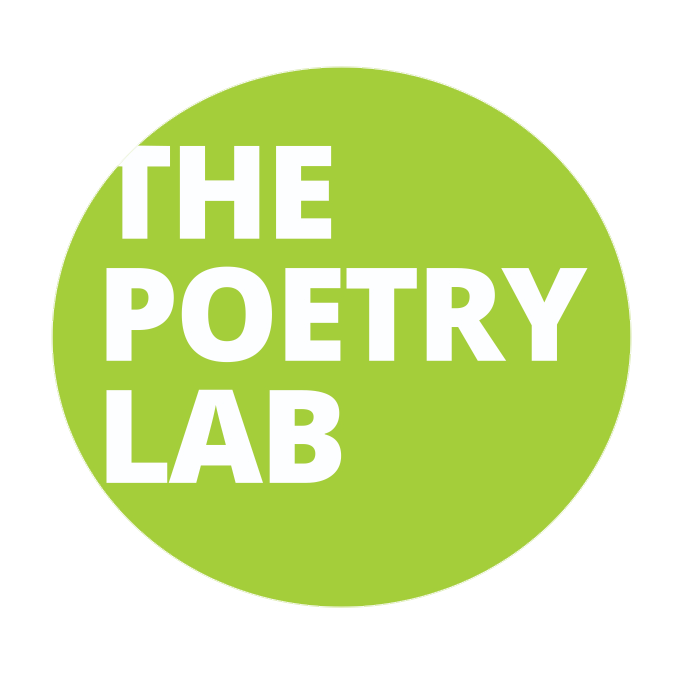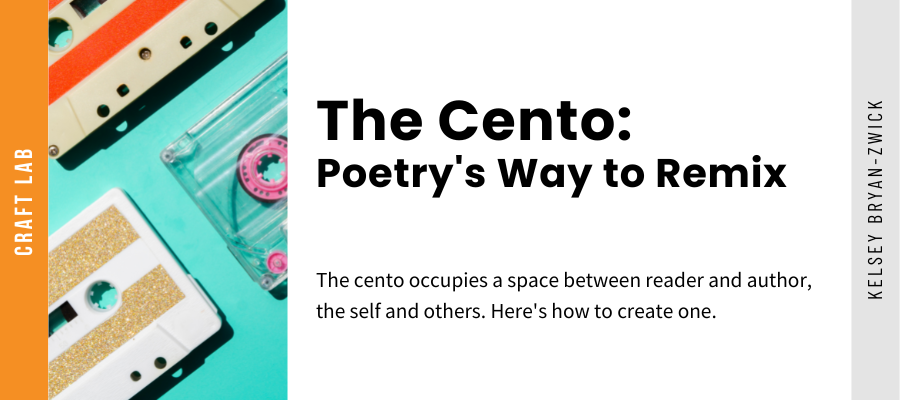Exploring the Surreal in Contemporary Poetry
Engaging in the surreal is strangely freeing. As someone driven to understand a poem, while also finding the task unendingly challenging, I appreciate the honesty of the surreal. It’s straightforwardly not straightforward.
“Surreal” is defined as bizarre, unusual, unreal, and “marked by the intense irrational reality of a dream” (via Merriam-Webster). By “surreal”, I don’t mean “Surrealism” with a capital S, which refers to a specific movement in art and literature in 20th-century Europe. Many forms and modes of poetry can be described as “surreal”, and a surreal poem doesn’t need to be 100% impossible or speculative; it can simply be intensely dream-like or unsettling.
The only requirement: the rules of the poem are not the rules of life. In a surreal poem, we’re elsewhere, floating in space. We’re in the poet’s mind, the great beyond, or the ether. Or maybe we’re right here at home, but the math isn’t math-ing.
5 + H + alligatorade = existential truth
While surreality gives us a pass to cut the tethers of logic and chronology, there’s also a mysterious truth to many surreal poems. The surreal doesn’t have to make sense. And the permission to express ourselves senselessly can sometimes lead to art that feels more sincere.
Our reality is undeniably strange. Engaging in the surreal feels key for this particular cultural and social moment, with so many technological and social realms in a state of upheaval. In researching surreality in art, I came across this quote that struck a chord:
“There has been much talk of late about our own surreal age. Certainly, there are parallels between the 1920s and now: The United States has just extricated itself, messily, from a war; nationalist fervor is part of the political mainstream; basic rights are being revoked; and some version of a pandemic that has killed millions lingers from one month to the next. And if Surrealism is, at its core, a kind of glitch in the status quo, a moment in which reality itself becomes vaguely unrecognizable, then yes, time is seeming pretty melty, and the days rather dreamlike.”
- Looking at Surrealist Art in Our Own Surreal Age - The New York Times
In an age where “reality” is often questioned and obscured, poetry is especially powerful in its ability to capture the surreality of the present moment on the page.
But how can we intentionally move to a more surreal place in our writing?
Surrealism as a scale
Most poems have surreal aspects and grounded aspects. Rather than being a strict mode, poets can use the surreal as a literary technique.
Take the poem “The Colonel” by Carolyn Forché:
What is surreal here? Conversely, what makes the reader feel grounded? For this reader, the most surreal moments in the poem center on the human ears: how one “comes alive” in the glass of water, and the personification of the ears as listening or turning away from the colonel’s voice.
Grounding aspects of the poem include the high level of detail, which gives the narrative credibility and clarity, as well as the straightforward chronology. I don’t feel lost in time and space, but I do feel far outside of reality as I experience it.
The juxtaposition in the poem between the mundane imagery—like the newspapers, the mangoes, the TV commercials—and the sack of human ears adds to the surreal tension of the piece.
Many poems fall into this gray area between speculative and residing in reality. How a poet chooses to balance these aspects can significantly impact the effect of the poem on the reader.
Three strategies to approach the surreal
Elements of craft including non-sequitur, in media res, surprise, juxtaposition, fragmentation, and more can help turn regular plain ‘ol poems into surreal, supernatural, or bizarre ones.
At The Poetry Lab, we like to approach “craft” as something subjective, ever-changing, and only as relevant as it is useful to the poet. In that spirit, here are three strategies of craft to help build surrealism in your poetry.
1) Surreal Premise
For those who always find themselves trapped in a logically-sound poem, this strategy is especially approachable. With a premise firmly outside of reality, you don’t have to worry about melting the clocks as you go.
One of my favorite examples of a poem with a surreal premise is “The Reality Testing Booth” by Sabrina Orah Mark. A prose poem, “The Reality Testing Booth” unfolds in a narrative style. Though the poem feels straightforward, the concept of the “testing booth” signals to the reader that we’re not following logic.
The poem centers on two characters, Beatrice and Walter B, who attempt to test a hat (“It was strange to choose, but it seemed only right to first test an object”) and end up waiting days for the results. The last line uses the three words that Beatrice and Walter B. had brought to the testing booth in the first stanza, “love”, “day”, and “delectable”:
“As if it was actually he who was the love
that made each of her days delectable.”
The surreal premise allows for this logic to fold into itself in the end, as the words that they bring to “test” become part of the narrative.
Many poems with a surreal premise are also prose poems, a form that pairs well with presenting a narrative that’s subverted by surreal elements. A seemingly straightforward format, like prose, can emphasize the surreal further.
Other examples of poems with a surreal premise:
“The Green Lantern Unlocks the Secrets of Black Body Theory” by A. Van Jordan
“Autumn” by Chen Chen
“The Academic Sigh” by Russell Edson
“Edmonia Lewis and I Weather the Storm” by Xan Phillips
“Lost and Found” by Maxine Chernoff
2) Fragmented Narrative
Another way to approach the surreal is by fragmenting a narrative, making it difficult for a reader to get their bearings or feel grounded in the piece.
For example, the poem “Givingly” by Carl Phillips resists clarity, offering a narrative but fragmenting it and maintaining a dreamlike mode. The first lines are spoken by an unidentified “he”, described as lassoing the speaker’s “antlers”. Whether the antlers are metaphorical or the speaker is an antlered creature is left up to the reader to decide. In the 6th line, the description turns: “Smell of nightfall when it / hasn’t settled yet. Insatiability and / whatever else hidden behind the parts.” These fragments take us a step away from the central narrative of the speaker and the “he”, creating an effect similar to parataxis, in which a list or set of clauses are presented without hierarchy.
In the 10th line, we return to the speaker being led by “him”, to “the usual place”, before the narrative once again shifts focus. In the final stanza, we end with a description of the wind as “clean” and “a good thing”, an unexpected turn away from the tension of the scene, leaving the reader to question what happens next.
Narratives can also be fragmented through using techniques like “in media res” (starting a poem in the midst of things) and “non-sequitur” (when a statement doesn’t logically follow the statement preceding it), which both subvert organization and logic in narrative progression.
Some poetic forms can generate especially fragmented work, such as the cento, which is a poem composed of lines from other poems.
More examples of poems with a fragmented narrative:
“Scavengers” by Ocean Vuong
“The Prestige” by Hanif Abdurraqib
“Spotify My Body” by Ellie Sawatzsky
“18” by Kim Addonizio
“Look” by Laura Kasischke
3) Associative Leaps / Stream of Consciousness
Rather than a fragmented narrative, which interrupts, twists, or subverts a logical sequence, poems in this category lack a strong central narrative. Instead, the forward motion is more associative or monologue-like.
In the poem “I Once Was a Child”, Victoria Chang follows a long series of associations craftily assembled. In the first stanza, the speaker is introduced as “once” a child, and then the focus shifts to the concept of prizes of childhood (“a lollipop or a sticker”). Other memories arise, with the repetition of “one year”, keeping the reader unmoored in time:
“one year everyone got a tap on their shoulders
one year everyone was fired everyonefired but me one year we all lost our words one year
my father lost his words to a stroke
a stroke of bad luck stuck his words”
While we know the images and allusions are intentional and chosen carefully, the poem feels more like a spontaneous inner monologue. The poem lacks punctuation, even when repeating the same word twice back-to-back, adding to the dreamlike movement. In the fourth stanza the song “This Land is Your Land” is introduced (often associated with school and childhood) and finally, the poem leaps to the concept of ownership.
Associative leaps can create effects like surprise, jarring juxtaposition, non-sequitur, and other elements that contribute to surreality in a poem.
More examples of poems with associative leaps:
“Portrait of the Alcoholic Floating in Space with Severed Umbilicus” by Kaveh Akbar
“gather them & give them back to me” by Renia White
“Do you find it hard to live?” by Harmony Holiday
“Sleeping with the Dictionary” by Harryette Mullen
“Moon Pie, or a Fat Ode to Pussy and Marshmallows” by Diamond Forde
***
Surreal poetry is an inherent reminder to give the words on the page the full and rich world they deserve. Human lives may be constrained by logic and laws and rules of physics, but our poems aren’t.
How might you use the surreal to your poem’s advantage? How can you stretch reality to cover a wider expanse of your truth? Follow your gut and let your imagination run wild, poet.
This article was published on July 3, 2023. Written by:










